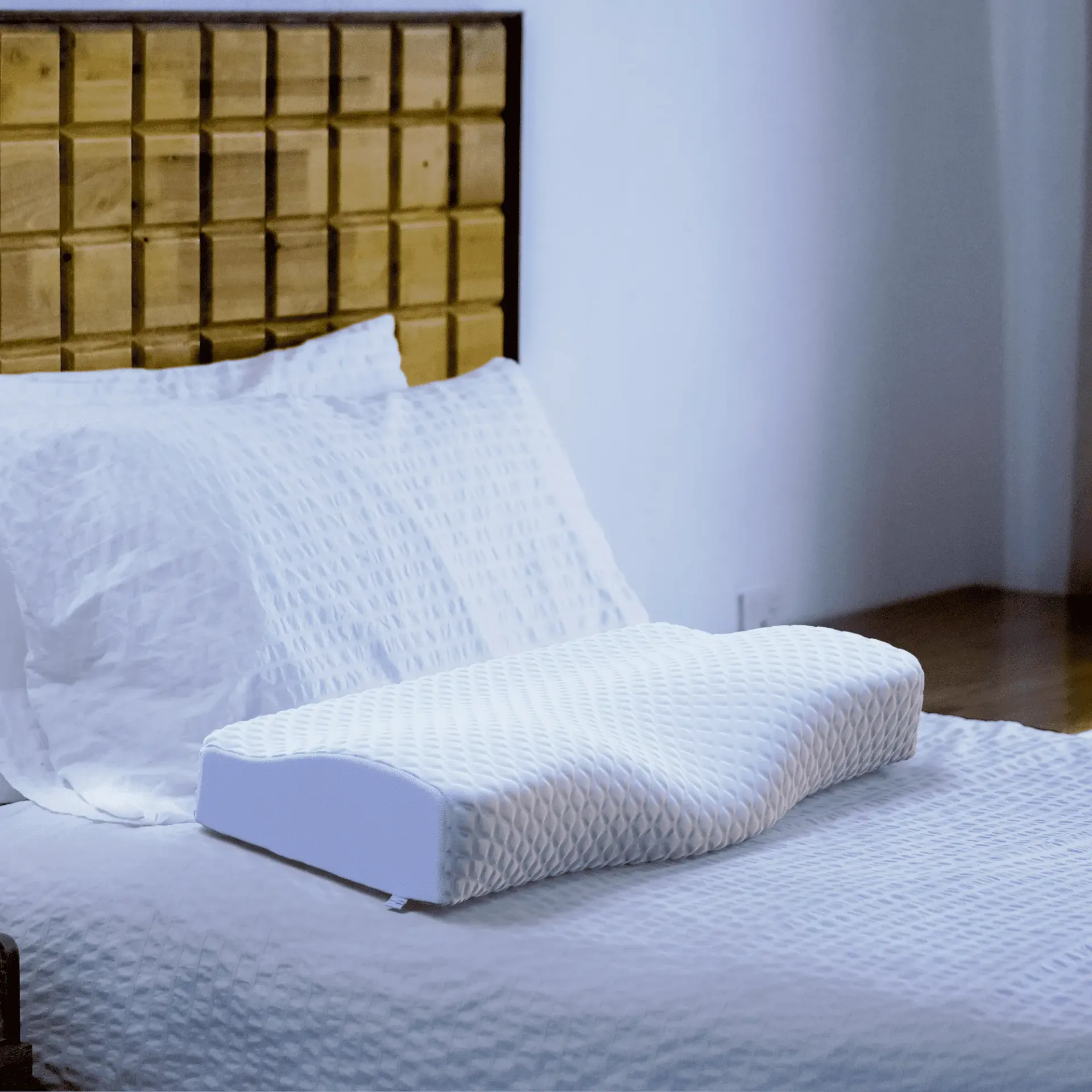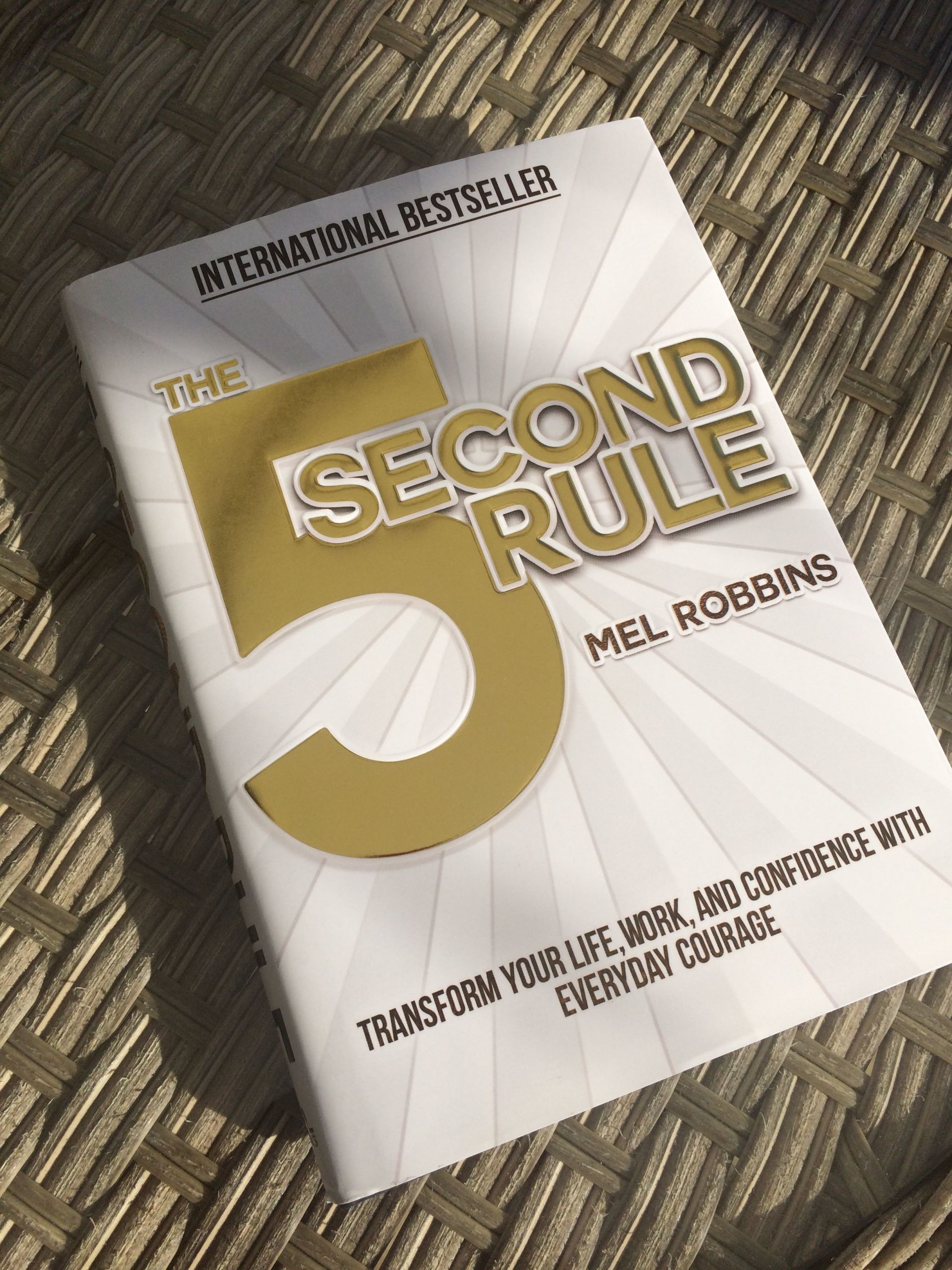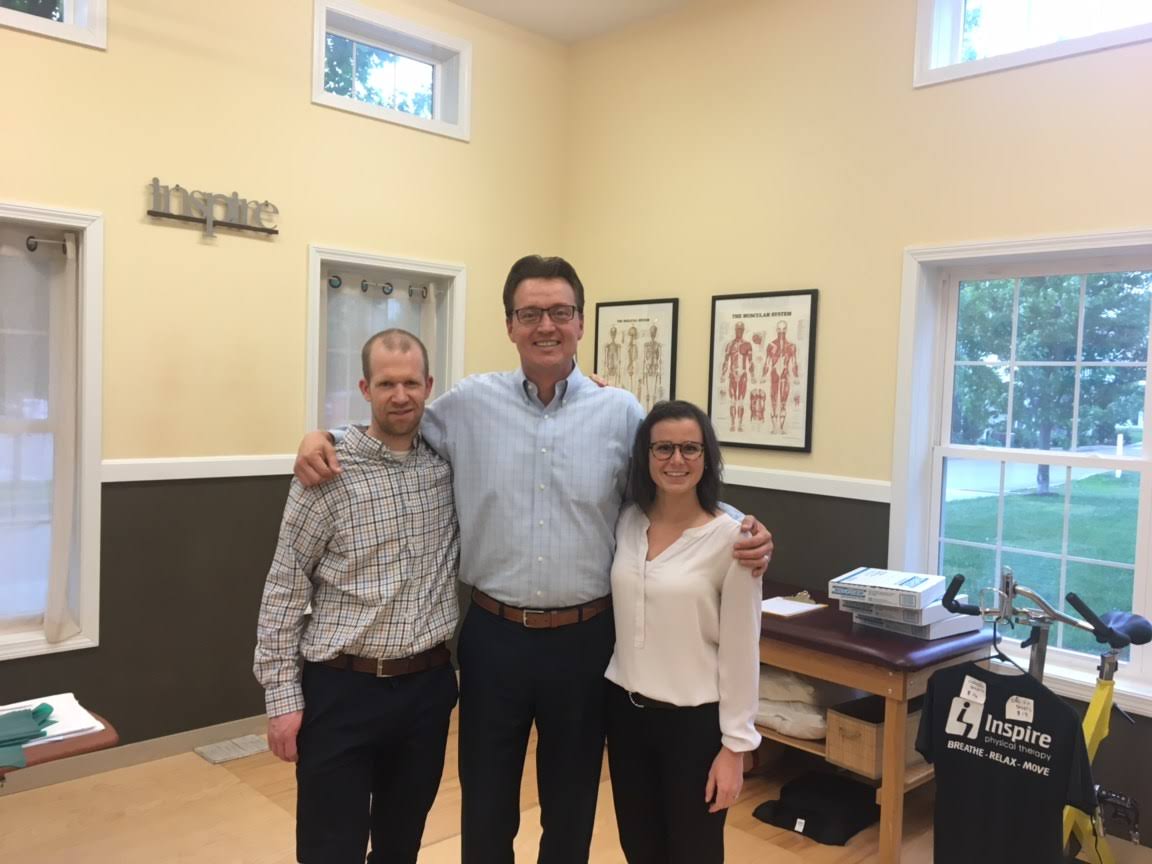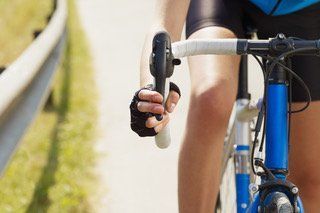INTERMITTENT FASTING AND ANTI-INFLAMMATORY FOODS
- By 7011224491
- •
- 31 Jan, 2019
- •

It seems that every year there are new fad diets and buzz words surrounding diet, nutrition and exercise. Often times the information is contradictory - is caffeine good? Or is it bad? Should I eat gluten free? Should I keep whole grains in my diet? It becomes confusing and overwhelming and can make it difficult for you to decide which option really is the best for you. With today’s blog post I want to share my experience with one lifestyle change (I hate to use the word diet for it because that’s definitely not what it is) and how it affected my weight, energy and mood.
As an active person who has a tendency to easily gain weight (Thanks, mom), I’ve always struggled to find and maintain a weight, energy level and fitness level that I was comfortable with. Either I was at a weight that felt comfortable and my energy level was crap or my fitness level was at its peak but I still had poor energy and was carrying what I considered extra weight. To clarify, I don’t think weight is everything. And I don’t think using a universal scale such as BMI is necessarily the way to determine what weight you should be. I think each person has a weight at which they are comfortable and confident with the way the look and feel. Basically I would change my diet and exercise habits but would always be plateaued at the same weight, a weight at which I didn’t feel comfortable or confident.
When watching a docu-series called “The Truth About Fat” I was introduced to the “Glow15” lifestyle developed by a woman named Naomi Whittel. I purchased the book and started on the journey of intermittent fasting, protein cycling and increased (healthy) fat intake. The basic concept of this lifestyle change is that you fast for 16 hours, 3 days a week. I know that sounds intimidating but the majority of that fast time is while you are asleep! For example, if you finish dinner at 6:30pm you eat your breakfast the next morning at 10:30am. You’re not skipping any meals here! Just pushing back the time you eat your first meal. And it’s only three times a week. Really, once you get through the first week and you get over your sugar cravings it becomes very easy. If my husband, the man who lives for breakfast, can do it I think you can too.
So why fasting? According to the research in her book, fasting for more than 12 hours puts you in a temporary state of ketosis which allows your cells to perform autophagy. This is a cellular action in which your cells basically clean themselves up. This has a huge anti-inflammatory effect. And why 16 hours? That seems to be the max benefit time, anything longer than that isn’t of any additional benefit. The theory is that if you pair the intermittent fasting with an increase in healthy fats you change your cells from functioning on sugar to functioning on fat. This helps kick the sugar addiction many of us have but often aren’t willing to admit (they stick that stuff in everything!) Sugar creates inflammation in our bodies - by eliminating that addiction and changing the type of fuel our cells use to do what they do, we reduce inflammation. Additionally, cells that are cancerous can ONLY survive on sugar, they can’t function on fat. So you’re cleaning up your own cells that are no longer functioning to benefit you and killing off cancer cells. Sounds like a win-win, right?
The actual food intake guidelines consist of some of the basic things we’ve heard about - whole grains, lots of vegetables, grass-fed and organic meats, fruit and healthy fats like avocado and olive oil. No, sorry, this won’t work if you fast and then eat a burger and fries for lunch and an entire pizza for dinner. You still have to make good food choices. The focus is fat intake and protein cycling. Every day, whether it is a fasting day or not, the first thing you should consume should be fat. Have an avocado and some eggs, eggs and a little bit of organic bacon or drink a green smoothie with some almond butter. Then on the days that you do fast you should eat less protein, non-fasting days should be your normal amount of protein. According to the Glow15 book, most people get far more protein than they actually need (and more than their body can process). As a person that doesn’t really like meat, I was glad to read this! I obviously get plenty of protein from other sources, even though everyone else seems to always be concerned that I’m not getting enough (Vegans and vegetarians can probably relate). But I was relieved that I wasn’t going to have to try to get more like many other diets/lifestyles recommend.
Ok, simple enough. Fast 16 hours, 3 times a week. Eat fat first. Less protein on the days you fast, regular amount of protein on the days you don’t. Make good food choices but know that if you want some pizza, you can have some pizza. So what were my results? Honestly, I’ve never felt better. Those last couple of pounds that I couldn’t drop even when I was doing 2-a-day workouts, gone in 2 weeks. My energy level was beyond what I’ve ever remembered feeling in my 29 years of life. I always had the energy to exercise after a full day of work, cook dinner, walk the dogs and work in the garden. Then, I slept like a rock and woke up rested and ready to take on another day - I practically didn’t need an alarm.
But is this the right lifestyle change for you? I can’t really say but what I can say is that I think [almost] everyone should try it! My family, friends and patients are probably all tired of hearing me talk about it - I recommend it all the time! I’m currently expecting my first baby in April but as soon as I’m able to return to this lifestyle I’m absolutely going to.
Danielle Juckett DPT
I recently gave birth to my first child in April, and while I was quite miserable for the first half of my pregnancy, thanks “morning” sickness, she was 100% worth everything I went through. (And I think most moms would say the same thing.) I knew I was going to be sick and sore and uncomfortable during pregnancy however, I didn’t anticipate the continued discomfort 4 months after giving birth. I went from carrying baby inside my body, adding extra weight to the front and shifting my center of mass, to now carrying baby outside my body but still in the front or on my hip - children are not ergonomic. And as a breastfeeding mom I’m still tweaking positions to nurse without twisting, bending or finding myself in any other strange pretzeled position. Plus my hormones will continue to contribute to increased joint laxity while I am breastfeeding. Thankfully my training as a physical therapist and my knowledge based in the science of the Postural Restoration Institute, I have been able to help manage my aches and I am increasingly aware of my body position in space and within itself throughout my day
The Postural Restoration Institute recognizes patterns in our bodies that come from simply being human, it is the way our bodies are designed that creates and encourages these patterns of movement. Every human with a liver on the right side of their bodies exhibits these patterns and there are predictable ways to compensate for them. From my experience of pregnancy and motherhood (so far), these patterns are stronger and feel more challenging to oppose when carrying baby while pregnant and after. Allowing these patterns to run the roost unopposed is when issues arise. I’d like to share a few tips to help mommas and mommas-to-be to help you manage any symptoms you may be having!
-
Change positions throughout the day - (This is helpful both during pregnancy and after.) We live in a very sedentary world. We sit in our cars drive to work where we then sit at a desk all day and then get back into our cars and sit to drive back home. At least, most of us do. Others, like myself, have the ability to move throughout the work day and I was very thankful for that. Any time I was stuck sitting for more than 30 mins or an hour, my back was much more sore.
-
Don’t let that baby bump pull you forward - I went to prenatal yoga weekly during my pregnancy and I couldn’t help but notice all of the extremely deep, lordotic lumbar spines every week. Ladies, it is okay to engage your core during pregnancy! I know, I know, what core? That seems like an impossible task but it is not! I’m not talking about those “6 pack abs” (and yes you can get those back after baby!) but I’m referring to your oblique abdominals and your pelvic floor. These muscles will help stabilize your back while also helping with any potential incontinence issues.
-
Prop baby up when breastfeeding (or bottle feeding!) - Don’t try to bring your breast to your baby, bring your baby up to you. There are lots of nursing pillows and even just regular pillows will work fine (that is what I ended up doing as none of the nursing pillows worked for me). Same applies to bottle feeding, don’t hunch yourself over your baby to give them support. And don’t forget to alternate which side you are holding baby on - this is better for both you and for baby.
-
Look up every once in a while - I know that baby is so cute and it is such a miracle, but just because what you are looking down at isn’t a cell phone doesn’t mean it is good for your neck or upper back. Be intentional about looking straight ahead when you can.
My last tip is to come see us here at Inspire Physical Therapy. We can take a look at how your body is moving and give you more specific ideas and exercises to help manage your symptoms or simply to help you move better. Pain and discomfort is not a requirement for pregnancy and motherhood! Just because a lot of people feel that way doesn’t mean it is ok. Even if you are out of the newborn/infant stage or aren’t breastfeeding, your body went through some major changes and you deserve to enjoy your children with comfort and ease of movement.
Danielle Juckett DPT, PT

1. What is a
deductible plan?
Answer: A deductible is an amount of money the insurance has you pay before they begin to pitch in. In-Network healthcare applies to your deductible. Some people have an individual and a family deductible.
An individual deductible is the amount spent by that individual subscriber. A family deductible is the amount spent by all the people on that plan.
Once one’s individual deductible has been met, the insurance will either cover the whole appointment for that person or have them pay a co pay with that appointment depending on the plan. Once the family deductible has been met, the insurance with either cover the entire appointment or all except a co pay for all members of the plan.
2. What is an out of pocket maximum?
Answer: There are two options for what can happen once you reach your deductible depending on your plan. If you have an out of pocket maximum, you will continue to pay around 20% or a co pay until a certain dollar amount, the out of pocket maximum, amount has been reached. Then the insurance will pay 100%. If you do not have an out of pocket maximum or if your out of pocket is the same as your deductible, you will be covered at 100% or have only a co pay once you reach this amount.
3. What happens when I have a co pay plan?
Answer: A co pay is a set amount that you pay per appointment to contribute to your out of pocket maximum or deductible. After paying your co pay, the insurance will cover the rest of the appointment.
4. If I have Medicare or Medicaid will I have to pay anything for Physical Therapy?
Answer: Your insurance covers the appointments themselves however, if you decide to get orthotics, bands, balls, etc. insurance will not cover this.
5. What happens when I have a secondary insurance?
Answer: The primary insurance will be billed first. Then, they will send the remainder to your secondary insurance provider. They will pay some or all of the remainder and then send the rest to you. Sometimes a deductible has to be met before secondary insurance will pay.
6. How many visits do I get for Physical Therapy?
Answer: This depends on your plan. For many plans, such as Blue Cross Blue Shield of Vermont, there is a limit of 30 visits per calendar year. For other insurance plans such as Medicare or Medicaid, it goes by a dollar amount which is influenced by the billed amount. For Inspire Physical Therapy, we keep this number low so that you can have 15 guaranteed visits through Medicare/Medicaid. After these 15 visits, we can request more. Some plans group all therapies including speech, occupational, physical, and massage into the same appointment category. Be sure to tell any PT or health care provider if you have been seeing someone else so they can keep track of how many visits you have left.
7. How do I find out my Physical Therapy Benefits?
Answer: There is a member phone number on the back of your insurance card that you can call. If it is an automated message, select eligibility/benefits, give the ID number from the beginning of the card, you name, your date of birth and if you cannot receive your benefits after giving your information, press zero to speak to an operator. Some allow you to speak with a representative right away so you could try and bypass the system by saying “Speak with a representative” or “Operator.”
Not long ago a PRI colleague recommended “Jaws: The Story of a Hidden Epidemic”. It tells the story of how our Western diets of soft foods and our habit of mouth breathing have lead to problems both with tooth alignment (malocclusion) and more importantly jaw development and breathing issues including sleep apnea - which itself is a precursor to other, even more serious health issues. If you are interested in the details, the book is well worth reading!
The things that I took from the book that can easily be applied to my own life as well as the lives of my clients are:
Buteyko method to clear nasal congestion (as described at https://buteykoclinic.com/nose-unblocking-exercises/
-
Sit upright on a straight-backed chair.
-
Normalise and calm your breathing. Take a small breath (two seconds) in through your nose, if possible, and a small breath out (three seconds). If you are unable to take a breath in through your nose, take a tiny breath in through the corner of your mouth.
-
Pinch your nose and hold your breath. Keep your mouth closed.
-
Gently nod your head or sway your body until you feel that you cannot hold your breath any longer. (Hold your nose until you feel a relatively strong need for air.
-
When you need to breathe in, let go of your nose and breathe gently through it, in and out, with your mouth closed. Avoid taking a deep breath when you breathe in, and calm your breathing as soon as possible by focusing on relaxation. Repeat to yourself ‘relax and breathe less’.
-
Continue to do this exercise until you can breathe through your nose fully. If your nose does not become totally unblocked, wait about one minute and perform this exercise again. Initially you may need to do this a number of times before your nose is completely unblocked.
GOPex exercises (Good Oral Posture Exercises) as described in Jaws:
-
Practice meaningful chewing to build jaw musculature. Try to chew 15-20x with each mouthful - you may have to build up to this.
-
Learn to swallow with your teeth together
-
Close your mouth when not in use
-
Use your nose for breathing even when exercising (you will reach an intensity when nose breathing becomes insufficient). Personally, I have found that these devices that help keep your nostrils open make this much easier. https://www.amazon.com/Snoring-Solution-Congestion-Effective-Reusable/dp/B07DSTZ4KM/ref=sr_1_5?keywo...
-
Stand in front of a mirror and practice smiling for 30 seconds/day to improve facial muscle tone. The corners of your mouth should go up evenly and you should feel relaxed. (This feels weird to do at first, but I'm working on it)
Other recommendations throughout the book are:
-
Rest with your tongue lightly on the roof of your mouth with your teeth lightly touching. In the past I have heard it suggested that the lips should be sealed but teeth slightly apart. I called PRI and asked if they had a bias one way or another - either teeth lightly touching or just slightly apart should be fine. However, if the way your teeth touch puts you into a pattern, you will be better off with your teeth slightly apart or you may need to get a dental splint.
-
Chewing gum for 30mins/day is good jaw exercise. Do it with your lips closed and breathe only through your nose. Make sure to chew on both sides and keep your teeth together as you swallow.
-
If you have a child, ideally breastfeed for at least a year and during that time try not to bottle feed. Lightly pinch an infant’s lips together after nursing to encourage nose breathing. Avoid pacifiers until weaning is complete. Teach kids to keep their mouths closed when not eating or talking.
If you are interested in learning more you can purchase the book at:

I recently finished reading the 5 Second Rule by Mel Robbins. The basic premise is that you will never finish anything and achieve your goals, if you do not first START! I can relate to the need to JUST START, to many things I need to do personally. I also realized that this relates to many clients of mine as well. Using Postural Restoration as a treatment approach, I do expect my clients to do 2-4 exercises at home daily, in order to feel better. This should not be overwhelming! Each exercise is done for 4 sets of 4 breaths, and there are typically 4 exercises total. That is 4x4x4=64 breaths total of exercise, plus rest/reset time between exercises. To put this number of breaths into perspective, we typically breathe 12x/minute when we are at rest. So, even with slow deliberate breathing, putting aside 15-20 minutes to do exercises should be more than ample time.
So why do some people have a hard time fitting in their exercises? People are “busy” which can mean a variety of things. My own opinion on the matter of busy-ness is that we all fill our days with one thing or another, regardless of how productive or menial they may look from the outside. I think that rather than just focusing on being busy for the sake of being busy we should focus more on spending our time doing things that are important to us. Maybe that is spending more time with your family, improving your health and well being, working out, some hobby, building a business or many other things. I would say that regardless of what is important to you, feeling physically good, is going to allow you to enjoy the things you want to do more, and it will also allow you to be more productive both physically and mentally too. Taking 15-20 minutes to exercise could easily come out of most peoples TV or phone screen time each day.
Here is where the 5 Second Rule comes in. Make a decision today about when is the best time to fit in your exercises each day. Personally, I like to do my own set of exercises first thing in the morning when I wake up. This is before anything or anyone distracts me, and I also like first thing in the morning because it sets me up to feel good for the day. Now, whatever time you choose, when it arrives and you start thinking about everything else you could/should be doing apply the 5 Second Rule immediately! Simply start counting down from 5 to 0 and when you get to zero MOVE! Move towards wherever you need to be to do your exercises and just START. If you start, chances are you will finish. Do this daily and chances are you will feel better.
The 5 Second Rule can be applied to many things, this is just one that I thought would be relevant to my clients. If you are interested in how/why it works and how to apply it to many other areas of your life go to:
https://www.amazon.com/Second-Rule-Transform-Confidence-Everyday/dp/1682612384
Before your attention wanders start counting 5,4,3,2,1,0 now MOVE!

This has been a busy month of learning! First we had the 8th Annual Ski Round Table meeting, then we took the PRI Fitness and Movement Course and finally we had James Anderson spend a day mentoring us in clinic.
To read more about what we have been learning click here

People often wonder what the key to being pain free is. Some people, no matter how flexible they are, are convinced that more flexibility is the answer. Other people, no matter how strong they are, are convinced that more strength is the answer. Either way, whether you think flexibility or strength is the key, I can easily show you people who have those attributes, but are still in pain.
The key, in my experience, is balance and with it good body mechanics. So, how do we know if someone is balanced? We use tests that measure if your body has equal motion and strength on both sides of your body. We look at how you sit and stand to pick up on static imbalances. We look at how you put everything together when you walk and run to pick up on dynamic imbalances. Once we have identified the imbalances we then work to correct them.
When you look at the first video, you can see this young man veer to the right twice while walking down the corridor, so that he is closer to the wall on his right side. His left shoulder is lower than the right, and his shoulders are turned to the right. His head and eyes are looking down.
Everything we just described is the result of muscle imbalance. So let’s break down what needs to be corrected at his pelvis, spine and rib cage/thorax.
His pelvis is turned to the right and shifted laterally to the right.
You can’t see it in this video, but when this young man lays flat on a table his left ribs are more prominent or flared than the right, due to left abdominal internal obliques that are long and weak. This weakness contributes to allowing the lumbar spine to rotate to the right.
His rib cage/thorax follows a somewhat unusual pattern. He is oriented to the right, yet his left shoulder is lower than his right. He compensates with a lateral shift of his upper torso to the right.
In order to bring this young man into a more balanced state, we gave him asymmetrical exercises that focused on turning his pelvis to the left and shifting his pelvis laterally to left. We worked his left abdominal internal obliques to correct his rib flare and stabilize his spine from rotating to the right. To balance his rib cage/thorax we had to focus on reaching activities with his right arm to engage his serratus anterior to shift his upper ribs to the left to bring him back to a centered/balanced position.
The exercises he was given were asymmetrical to promote equal strength and motion on both sides of his body - we only worked the weaker side in order to bring it up to the level of the stronger side. You can see the results in the second video - and yes he feels good too!
If you have imbalances that are grossly visible, or even if you notice that things just feel different from one side of your body to the other, let us know and we will be happy to help!

Numb hands are a commmon complaint among many cyclists. They are caused by nerve compression most often of the ulnar (funny bone nerve that enters your wrist on the pinky side) and sometimes of the median nerve (the nerve involved with carpal tunnel syndrome that enters through the midline of the wrist). Injury to one or both of these nerves can cause numbness and tingling of the hands and/or weakness and clumsiness of the hands.
To correct the problem there are several bike fitting options as well as a couple of suggestions while riding to take pressure off your hands and nerves. You can either try these suggestions yourself or ask your local bike shop for help.
- Frequently change hand position while riding
- Keep your wrists in a neutral/relaxed position (forearm and hand should be close to being lined up)
- Wear well padded gloves (gel is the best form of padding)
- Use well padded bar tape
- Check saddle tilt (if the nose is too low your weight may be moving forward onto your hands)
- Check your reach (elbows should be bent about 65-70 degrees)
- Ride a fatter/wider front tire at a lower pressure (to decrease vibration)
- Check handlebar shape and possibly try carbon handlebars (the shape will affect wrist position)
- Check saddle height relative to handlebars (recommendations vary by frame size. The goal is to take weight off your hands.
If these measures are not enough to correct the problem check in with your sports medicine practitioner to evaluate the problem. They will want to make sure that the nerve issue is indeed at the wrist and not coming from the elbow, shoulder/chest or neck. Once it is established that it is indeed a wrist issue the focus will be to decrease irritation of the nerves by working on wrist mobility and correcting mechanics/posture of the entire upper body. Modalities like ultrasound may also be used to decrease inflammation of the nerve. In cases that are resistant to all of these suggestions, you will be referred to an orthopedist for more aggressive testing and treatment. You are best off trying to fix the problem as soon as you start to notice symptoms – the less irritated the nerves are the quicker they heal!

